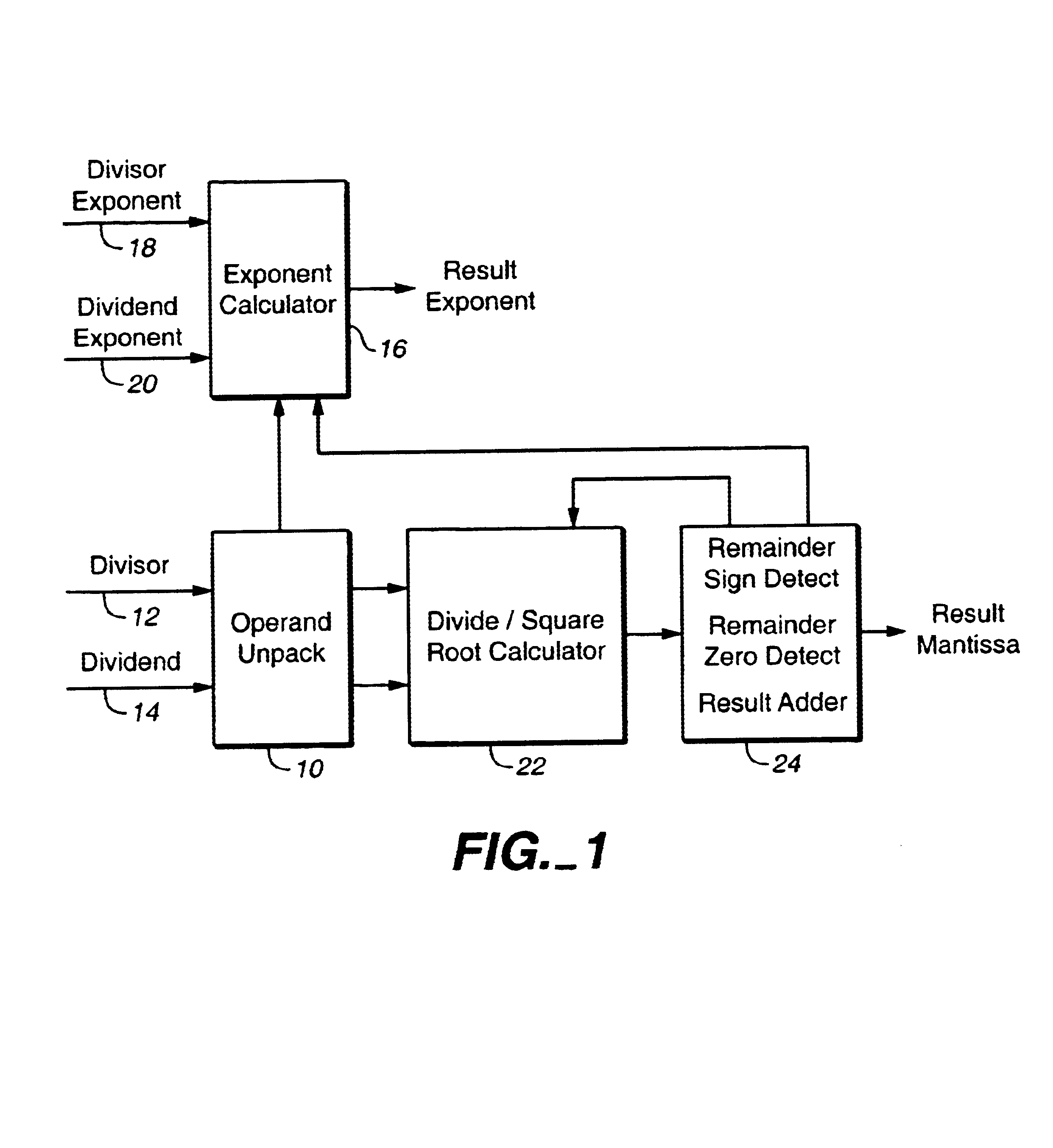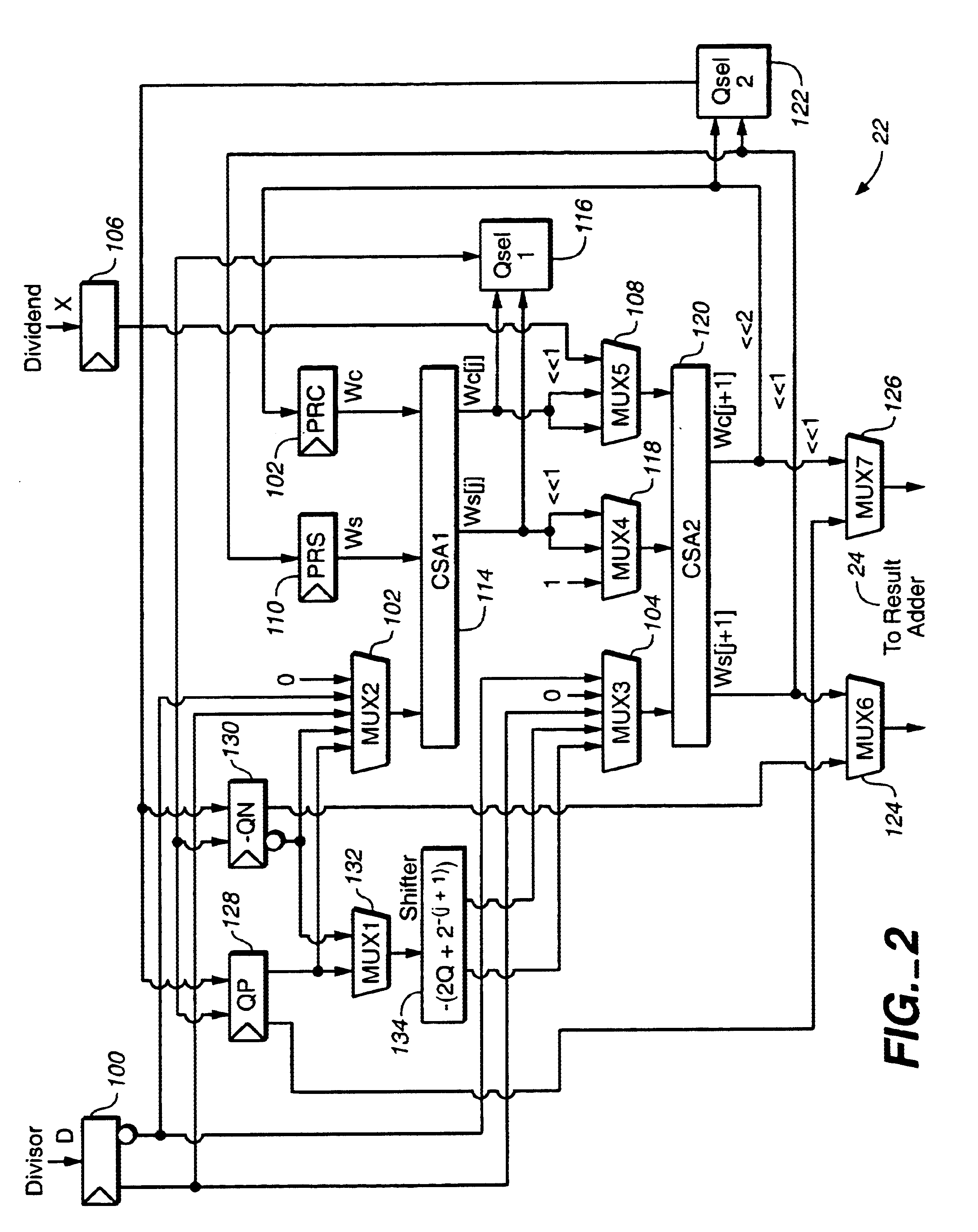Floating point divide and square root processor
a technology of divide and square root and floating point, applied in computing, computation using denominational number representation, instruments, etc., can solve the problems of requiring more ic space, significantly more complex, and complex radix-4 algorithm,
- Summary
- Abstract
- Description
- Claims
- Application Information
AI Technical Summary
Problems solved by technology
Method used
Image
Examples
Embodiment Construction
The present invention is directed to a divide and square root processor that meets a compromise between area and speed to implement the divide function. The square root function is implemented using the same hardware with minimal addition. Simple hardware, and hence low area and high speed, is achieved by using a SRT Radix-2 type algorithm.
FIG. 1 is a block diagram of the functional unit of a divide and square root processor according to one embodiment of the invention. The processor includes an operand unpack 10 that receives the divisor and dividend for a divide operation via busses 12 and 14, respectively. An exponent calculator 16 receives the divisor exponent and dividend exponent via busses 18 and 20, respectively. For a divide operation (DividendDivisor),
divisor bus 12 carries the divisor and dividend bus 14 carries the dividend. Divisor exponent bus 18 carries the exponent part of the divisor, and dividend exponent 20 carries the exponent part of the dividend. For a square r...
PUM
 Login to View More
Login to View More Abstract
Description
Claims
Application Information
 Login to View More
Login to View More - R&D
- Intellectual Property
- Life Sciences
- Materials
- Tech Scout
- Unparalleled Data Quality
- Higher Quality Content
- 60% Fewer Hallucinations
Browse by: Latest US Patents, China's latest patents, Technical Efficacy Thesaurus, Application Domain, Technology Topic, Popular Technical Reports.
© 2025 PatSnap. All rights reserved.Legal|Privacy policy|Modern Slavery Act Transparency Statement|Sitemap|About US| Contact US: help@patsnap.com



